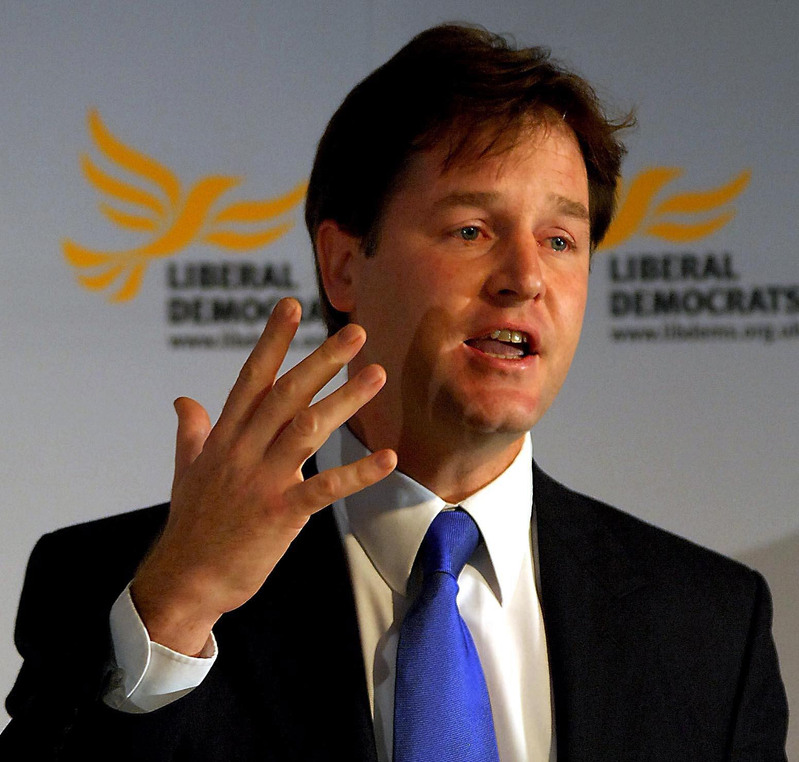Is the glass half empty or half full for the government in Oldham?
Was the Oldham East by-election result a particularly bad one for the Lib Dems? Labour held the seat comfortably, increasing its majority from a perilously slender 103 to a relatively healthy 3,558.
On one hand Labour’s vote actually increased after the ignominy of its candidate, Phil Woolas, being turfed out of Parliament and suspended from the party.
On the other hand, the Liberal Democrat vote fell by just under 3,000 against the backdrop of a turnout which had collapsed from 61.2% in May to 48% this time round. In fact the Lib Dem share of the vote is actually very slightly up. It is the Conservative share which has taken a serious hit.
Given the controversy which attended Nick Clegg’s elevation to deputy prime minister, it could be argued that his party's total isn't too bad. After all, the government traditionally gets a tough time at by-elections. The Lib Dems were last night trotting out the statistic that a governing party has not gained a by-election seat since 1982.
Equally the Tories’ lacklustre campaign in Oldham may have been affected by tactical voting. If the Conservative and Lib Dem totals were aggregated they would stand at 44.7% of the vote, rather than 58% in May. That statistic doesn't look quite so clever for either party. Just how many Tories lent their support to the Liberal Democrat candidate?
It’s practically impossible to reach a judgement on the health of the government, based on this by-election result. As far as coalition politics are concerned, we are, in any case, in uncharted territory.
Taking opinion polls and this result in concert, it’s fair to surmise that Labour is benefiting from becoming an opposition party rather than constituting an unpopular government. Others are doing the nasty and unrewarding work of clearing up the economic legacy bequeathed to them.
What we can say for certain is that the governing parties’ combined vote exceeds the Labour total by some 923. Whether you believe that offers a lesson for future elections, in terms of coordinating campaigns or resources, will depend upon your outlook on the coalition.
On one hand Labour’s vote actually increased after the ignominy of its candidate, Phil Woolas, being turfed out of Parliament and suspended from the party.
On the other hand, the Liberal Democrat vote fell by just under 3,000 against the backdrop of a turnout which had collapsed from 61.2% in May to 48% this time round. In fact the Lib Dem share of the vote is actually very slightly up. It is the Conservative share which has taken a serious hit.
Given the controversy which attended Nick Clegg’s elevation to deputy prime minister, it could be argued that his party's total isn't too bad. After all, the government traditionally gets a tough time at by-elections. The Lib Dems were last night trotting out the statistic that a governing party has not gained a by-election seat since 1982.
Equally the Tories’ lacklustre campaign in Oldham may have been affected by tactical voting. If the Conservative and Lib Dem totals were aggregated they would stand at 44.7% of the vote, rather than 58% in May. That statistic doesn't look quite so clever for either party. Just how many Tories lent their support to the Liberal Democrat candidate?
It’s practically impossible to reach a judgement on the health of the government, based on this by-election result. As far as coalition politics are concerned, we are, in any case, in uncharted territory.
Taking opinion polls and this result in concert, it’s fair to surmise that Labour is benefiting from becoming an opposition party rather than constituting an unpopular government. Others are doing the nasty and unrewarding work of clearing up the economic legacy bequeathed to them.
What we can say for certain is that the governing parties’ combined vote exceeds the Labour total by some 923. Whether you believe that offers a lesson for future elections, in terms of coordinating campaigns or resources, will depend upon your outlook on the coalition.

Comments